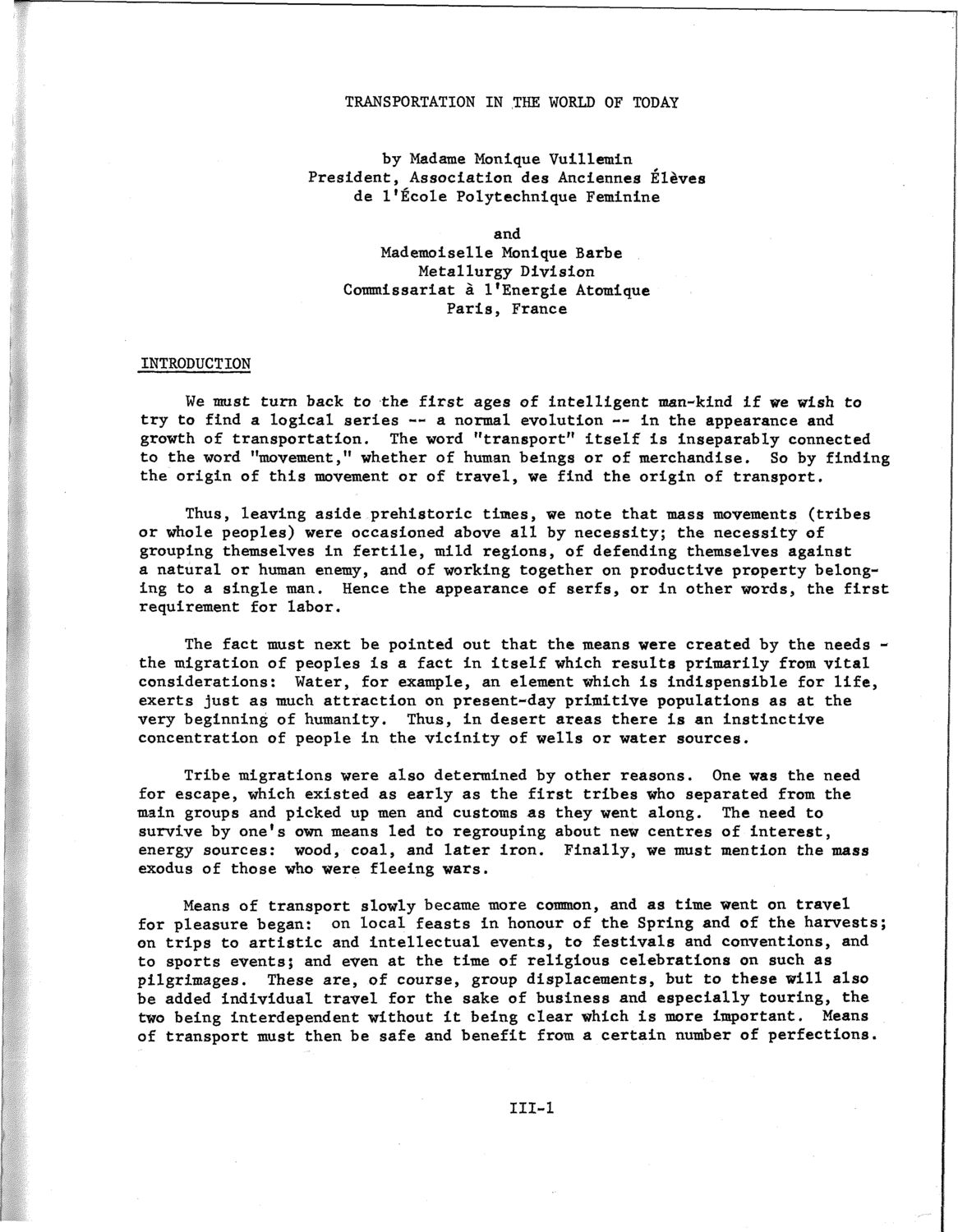| |
| |
Caption: SWE - Proceedings of the First International Conference of Women Engineers and Scientists
This is a reduced-resolution page image for fast online browsing.

EXTRACTED TEXT FROM PAGE:
TRANSPORTATION IN THE WORLD OF TODAY by Madame Monique Vuillemin President, Association des Anciennea Eleves de l'Ecole Polytechnique Feminine and Mademoiselle Monique Barbe Metallurgy Division Commissariat a l'Energie Atomique Paris, France INTRODUCTION We must turn back to the first ages of intelligent man-kind if we wish to try to find a logical series — a normal evolution — in the appearance and growth of transportation. The word "transport" itself is inseparably connected to the word "movement," whether of human beings or of merchandise. So by finding the origin of this movement or of travel, we find the origin of transport. Thus, leaving aside prehistoric times, we note that mass movements (tribes or whole peoples) were occasioned above all by necessity; the necessity of grouping themselves in fertile, mild regions, of defending themselves against a natural or human enemy, and of working together on productive property belonging to a single man. Hence the appearance of serfs, or in other words, the first requirement for labor. The fact must next be pointed out that the means were created by the needs the migration of peoples is a fact in itself which results primarily from vital considerations: Water, for example, an element which is indispensible for life, exerts just as much attraction on present-day primitive populations as at the very beginning of humanity. Thus, in desert areas there is an instinctive concentration of people in the vicinity of wells or water sources. Tribe migrations were also determined by other reasons. One was the need for escape, which existed as early as the first tribes who separated from the main groups and picked up men and customs as they went along. The need to survive by one's own means led to regrouping about new centres of interest, energy sources: wood, coal, and later iron. Finally, we must mention the mass exodus of those who were fleeing wars. Means of transport slowly became more common, and as time went on travel for pleasure began: on local feasts in honour of the Spring and of the harvests; on trips to artistic and intellectual events, to festivals and conventions, and to sports events; and even at the time of religious celebrations on such as pilgrimages. These are, of course, group displacements, but to these will also be added individual travel for the sake of business and especially touring, the two being interdependent without it being clear which is more important. Means of transport must then be safe and benefit from a certain number of perfections. III-l
| |